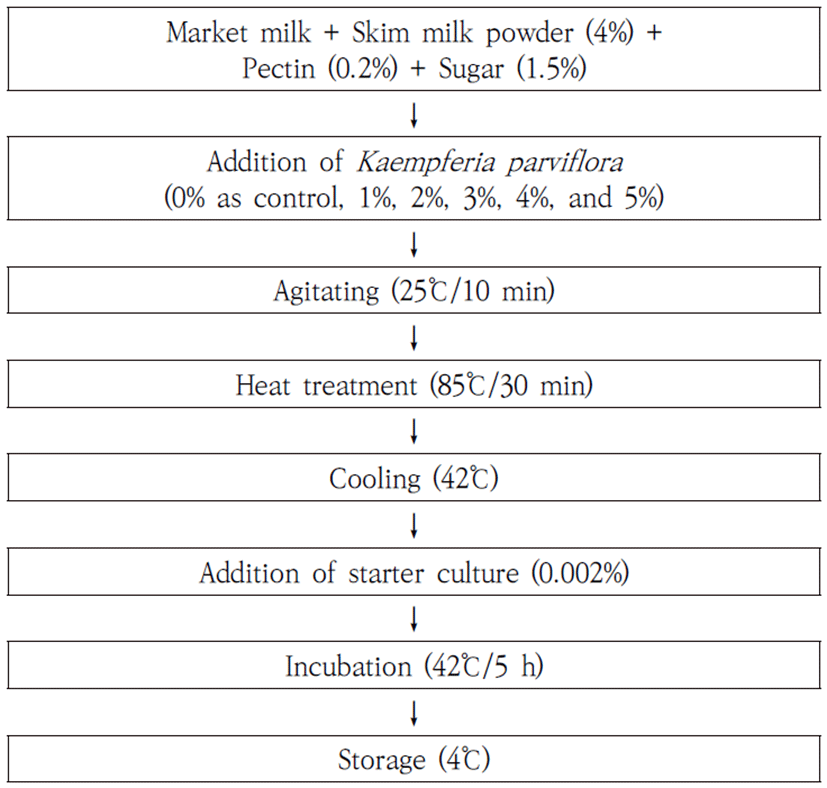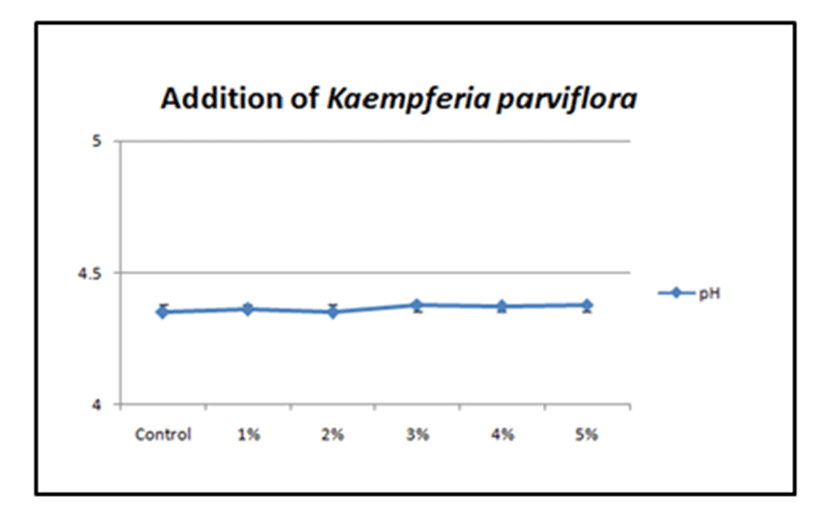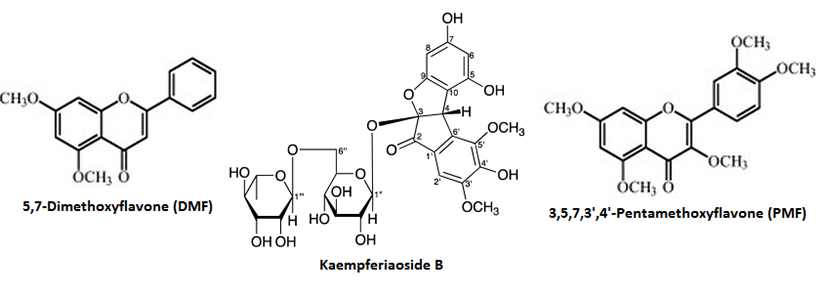Introduction
With a variety of probiotics as lactic acid bacteria, yoghurt is well received by consumers, and traditional yoghurt is a fermented milk product obtained through lactic fermentation of milk (Yang et al., 2014). Furthermore, because of its high digestibility, bioavailability, and proteolytic activities, yoghurt is a widely consumed functional food with the effect of improving lactose ingestion and blood glucose management, of strengthening the immune system, of having potential health benefits in allergies, colon cancer, inflammatory bowel disease, and of helping relieve constipation and diarrhea (Yadav et al., 2007; Shabboo and Ahmad, 2011; Yu et al., 2014). Studies conducted to date details are as follows: (1) to improve the functional yoghurt with bioactivity, (2) to prompt the anti-cancer effect (using cultured ginseng, dietary fiber, micronutrients, etc) and anti-inflammation effect (using black garlic, Chinese herb, green tea powder, isoflavone, omega-3 polyunsaturated fatty acids, vitamin D, etc) (Lee and Paek, 2003;
Jung and Park, 2005; Cavallini et al., 2009; McCowen et al., 2010; Shin et al., 2010; Shab-Bidar et al., 2011; Min et al., 2012; Damian, 2013; Sazawal et al., 2013). Hence, recently, the study of multi-functional yogurt using various natural materials has been actively conducted.
Furthermore, according to a recently report, the saponin’s contents of black ginger (Black Galangal or Krachaidam in Thai Kaempferia parviflora) were higher than others (Trisomboon, 2009; Mekjaruskul et al., 2012). Hence, using the black ginger, lot of interest in functional food production has been rising. The availability of black ginger is shown in Table 1.
Kaempferia parviflora Wall. ex Baker (local name, Krachaidam, a plant in the family of Zingiberaceae) has been long term used in Thai traditional medicine (Mekjaruskul et al., 2012; Wattanathorn et al., 2012). Components of Kaempferia parviflora can be found in traditional medicine products, such as pill and alcohol extract solution dosage forms (Wattanathorn et al., 2012). They are also available as tea and wine products. Until now, several pharmacological responses to Kaempferia parviflora and its components have been claimed, including aphrodisiac, anti-peptic ulcer, anti-inflammatory, anti-allergenic, anti-mutagenic, anti-depressive, anti-microbial, anti-cholinesterase, anti-cancer, cardioprotective, and anti- obesity activity(Sutthanut et al., 2007; Spencer, 2009; Mekjaruskul et al., 2012; Wattanathorn et al., 2012). Also, it has been reported that alcoholic extract of Kaempferia parviflora rhizomes contained numerous flavonoids which previously reported to possess anti-oxidant activity, neuroprotective and cognitive enhancing effects (Sutthanut et al., 2007; Spencer, 2009; Mekjaruskul et al., 2012). Recent finding showed that the alcoholic extract of Kaempferia parviflora rhizome could mitigate depression-like behavior in aged rats (Wattanathorn et al., 2007). In addition, inhibition of P-glycoprotein function and multidrug resistance-associated protein by Kaempferia parviflora have been demonstrated (Mekjaruskul et al., 2012; Wattanathorn et al., 2012).
Therefore, the purpose of this study was to manufacture the functionally yoghurt added with Kaempferia parviflora for improving palatability as new concept of functional yoghurt. So, among various components of yoghurt, pH and sensory evaluations of the functional yoghurt added with Kaempferia parviflora made in this experiment was analyzed.
Materials and Methods
Kaempferia parviflora were donated from Department of Animal Science & Technology, College of Animal Bioscience & Technology, Konkuk University in Seoul, Korea. The dried plant rhizome powder was macerated in 95% ethanol for 48 hours with occasionally stirring at room temperature. And then, the soluble ingredients were concentrated by rotary evaporator (RE801C-W, Yamato, Japan) at 50℃ until dryness. The yields were obtained for ethanol extraction type. The stock solutions were filtrated through 0.2 mm Millipore and stored at -20℃ before use.
Fermented or non-fermented red peppers was added to milk at concentrations of 0-0.1% and homogenized (Homogenizer T 25, Janke and Kunkel type, Ika, Staufen, Germany). Streptococcus thermophilus, Lactobacillus delbrueckii ssp. bulgaricus, Lactobacillus acidophilus, and Bifidobacterium animalis ssp. lactis (Lyofast YAB 450 AB, Sacco srl., Codaragok, Italy) were inoculated as detailed in Fig. 1 and fermented for 5 h. The yoghurt was stored at 4℃ for 24 h.

The pH of the homogenized yoghurt was determined using a digital pH meter (Orion Star A211, USA).
Sensory analyses were carried out by 5 trained assessors between 20 and 40 years of age. The samples were coded with three digit numbers and randomly served at 7 to 10℃ in plastic cups (10 mL). The assessors completed a test assessment form to compare the five sensory attributes (taste, flavor, appearance, and overall acceptability) by using a five-point hedonic scale (1, extremely poor; 2, poor; 3, fair; 4, good; 5, excellent). More details please refer to Table 2.
Three separate experiments with duplicate assays were performed. Data were expressed as means. Statistical analysis was performed using one-way analysis of variance (ANOVA; GraphPad Prism 5, USA) followed by Duncan’s post hoc test for mean comparison. Statistical significance was established as p<0.05.
Results and Discussion
The pH of yoghurt prepared with 0 to 5% Kaempferia parviflora are shown in Fig. 2.

The pH was decreased to around 4.3 after the fermentation of yoghurt mixture. The pH value of yoghurt added with Kaempferia parviflora (1% to 5%) showed similar to that of yoghurt added with Kaempferia parviflora (0% as control) (Fig. 2). While, The TA contents of yoghurt added with Kaempferia parviflora (1% to 5%) showed similar to that of yoghurt added with Kaempferia parviflora (0% as control) (Data not shown). There's no significant difference among these 5 groups including control group in pH and TA. In general, TA is high depending on the decrease of pH. Namely, the results of this experiment showed a similar trend with the results of other experiments (Yu et al., 2014).
The sensory properties of the yoghurt were evaluated by 5 trained panels of ages 20 to 40 years, and the results are summarized in Table 2.
The yoghurt was prepared with Kaempferia parviflora at concentrations of 0 to 5%. The taste scores for yoghurt with Kaempferia parviflora (1% to 5%) ranged from 4.5 points to 1 point, which were lower than those for yoghurt added with Kaempferia parviflora (0% as control) (5 points). The flavor score of yoghurt with Kaempferia parviflora (1% to 5%) ranged from 4.5 points to 1.5 point, whereas that of yoghurt added with Kaempferia parviflora (0% as control) showed 5 points. The color value of yoghurt with Kaempferia parviflora (1% to 5%) ranged from 4.5 points to 1 point, which was comparable to that of yoghurt added with Kaempferia parviflora (0% as control) showed 5 points. The overall acceptability decreased with increasing amounts of added Kaempferia parviflora. Among the experimental group, high scores were received by Kaempferia parviflora-containing yoghurt with 1% compared with the control group. Summarizing the results, the taste, flavor, color, and overall acceptability decreased in proportion to the added amount of Kaempferia parviflora. When compared to other similar studies, according to the report of Chun and Chung (2011), for applying ginger to processed foods with improving health and decreasing its pungent odor, fermented gingers were prepared using lactic acid bacteria from Kimchi, dairy products, etc. The plain yoghurt added with dried ginger or fermented ginger was manufactured and then the chemical and sensory properties were investigated. The results showed the less tasty and lowered the overall acceptability of yogurt compared with the control group (Chun and Chung, 2011). Hence, future research to reduce the pungent odor of ginger will be continued.
And Ban et al. (2010) reported that black ginger were obtained from steaming and drying process so as to provide the various functional properties, and it was performed to investigate the optimum processing conditions for black ginger with high content of biologically active substance such as anti-oxidations. The optimum steaming condition was determined 6 hours at 93.2℃, and 82.7 mg/L DPPH(2,2- diphenyl-1-picrylhydrazyl) scavenging activities was obtained at this condition using response surface methodology. Also the optimization of mixture ratio was made by statistical modeling using DPPH scavenging activities and sensory properties which are the important target constraints in drink, since the response trace plot revealed that antiradical activity, sensory properties and total flavonoids were quite sensitive to the drink blending (Ban et al., 2010). Therefore, research is need to investigate the optimum conditions of getting maximum anti-oxidant during manufacture of yogurt.
Based on the result of the experiment, the future will have to be in progress antioxidant study. The reason for this is as follows: The addition of Kaempferia parviflora in yoghurt could improve the functional properties such as antioxidant activity as well as the sensory characteristics of yoghurt. In general, Kaempferia parviflora was recognized as the active ingredients. The methoxyflavones (flavones with methoxy groups attached to them) were seen as the main compounds, with the three known as methoxyflavonoids 5,7-dimethoxyflavone (DMF), 5,7,4'-trimethoxyflavone (TMF), and 3,5,7,3',4'- pentamethoxyflavone (PMF) being most commonly researched.
Kaempferia parviflora also appeared to take standard bioflavonoid compounds and add either methoxy or methyl groups to their structures (Mekjaruskul et al., 2012) (Fig. 3).

According to the report of Malakul et al. (2011), antioxidant effects are also attributed to methoxyflavones which have shown benefit in diabetic rats (high oxidant stress in endothelium) at an oral intake of 100 mg/kg bodyweight; in this study which confirmed a DMF content, the supplemental Kaempferia almost normalized superoxide production (and indirectly preserved Nitric Oxide levels) in diabetic mice without influencing control mice.
Therefore, there is an urgent need for more additional research on manufacture of the multi-functional yogurt (ex. anti-obesity, and anti-inflammatory, etc) using Kaempferia parviflora based on a variety of previous studies. Also, the further study should be conducted in order to maximize the effectiveness of Kaempferia parviflora using by lactic acid bacteria with the excellent bioactive activity (ex. LAB isolated from Kefir and so on).
In conclusion, the addition of yoghurt with Kaempferia parviflora (1% to 5%) resulted in increased titratable acidity and decreased pH. In sensory evaluation, yoghurt containing 1% concentration of Kaempferia parviflora received higher scores for taste, flavor, and overall acceptability. Furthermore, in the future, although the amount added is less than 1%, it is shown to make sure that the same functions and results of this experiment.






